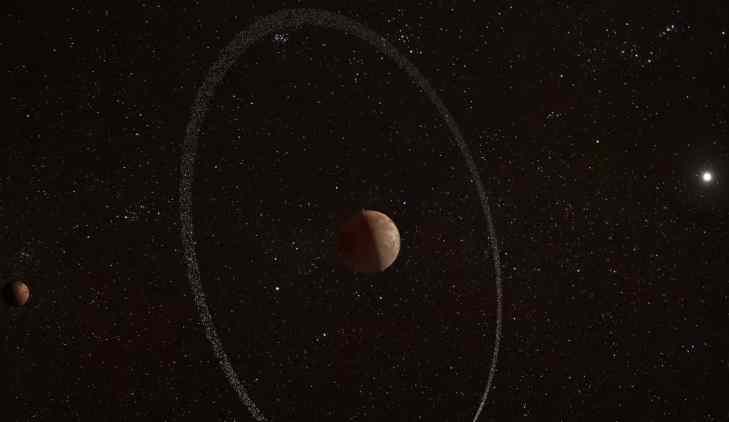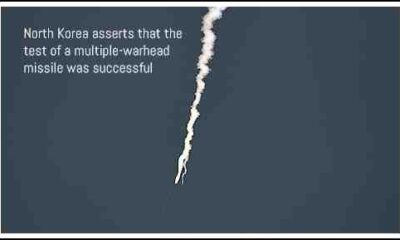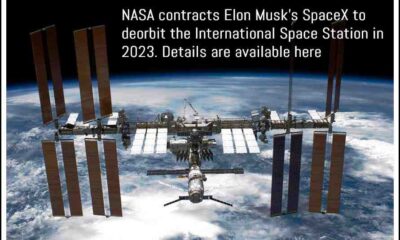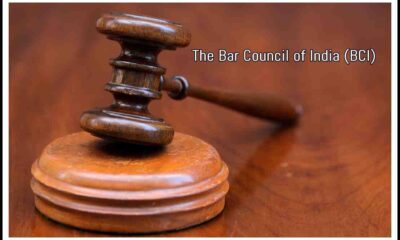India
This dwarf planet is surrounded by a ring
Published
1 year agoon

There’s a ring around this dwarf planet. Images taken with a telescope do not show the ring. Astronomers discovered it inadvertently when distant stars happened to pass behind Quaoar, blocking the starlight
Kenneth Chang wrote this.
A small icy world far beyond Neptune has a ring similar to Saturn’s. Surprisingly, the ring is located at a distance where simple gravitational calculations would indicate there should be none.
“That’s very odd,” said Bruno Morgado, a professor at Brazil’s Federal University of Rio de Janeiro. Morgado is the lead author of a paper published on Wednesday in the journal Nature that describes the ring that encircles Quaoar, a 700-mile-diameter planetary body that orbits the sun at a distance of about 4 billion miles.
“That’s very odd,” said Bruno Morgado, a professor at Brazil’s Federal University of Rio de Janeiro. Morgado is the lead author of a paper published on Wednesday in the journal Nature that describes the ring that encircles Quaoar, a 700-mile-diameter planetary body that orbits the sun at a distance of about 4 billion miles.
Read Also: LIC says it may reconsider its stake in Adani,Following a management meeting
Quaoar orbits the sun in the Kuiper belt, which includes Pluto and is a region of frozen debris beyond Neptune.
Images taken with a telescope do not show the ring. Astronomers discovered it indirectly, when distant stars passed behind Quaoar, blocking the starlight. Quaoar passed in front of four stars between 2018 and 2021, and astronomers on Earth were able to see the eclipses, also known as stellar occultations.
They did, however, notice some dimming of the starlight before and after the star blinked out. An international team of astronomers concluded in a paper published in Nature on Wednesday that this pointed to a ring obscuring part of the light. (Another stellar occultation occurred in 2022, but it was not reported in the Nature paper. Morgado stated, “We saw the ring again.”
It appears that the ring is uneven. In some places, it appears to be very thin, only a few miles wide, whereas in others, it may be several hundred miles wide. Morgado claims that if the ring particles were collected, they would form a 3 mile wide moon.
“I’m impressed by the thoroughness of their analysis,” said Richard G. French, emeritus professor of astrophysics at Wellesley College in Massachusetts and a long-time researcher of planetary rings. He had nothing to do with the research.
Astronomers used to believe that asteroids and other small bodies were too small to have companions like moons and rings. However, in recent decades, they have discovered moons orbiting numerous asteroids and Kuiper belt objects. They then discovered rings — essentially moons that never formed — around smaller objects.Astronomers discovered a pair of rings around Chariklo, a centaur that orbits the sun between Saturn and Uranus.
A ring was discovered in 2017 around another Kuiper belt object, Haumea, as a result of dimming during a stellar occultation. However, those rings are relatively close to their worlds.In 1848, French astronomer Édouard Roche calculated what is now known as the Roche limit.
Material orbiting closer than this distance would be pulled apart by the parent body’s tidal forces. As a result, a ring within the Roche limit is more likely to remain a ring, whereas a ring of debris outside the Roche limit is more likely to coalesce into a moon.The rings that surround the solar system’s giant planets — Jupiter, Saturn, Uranus, and Neptune — generally fit within the Roche limit. Chariklo’s rings are actually a little beyond the Roche limit among the distant smaller worlds. The ring that encircles Haumea is within the limit.
There’s also the Quaoar ring.
It is 2,500 miles beyond the Roche limit, which the scientists calculated to be 1,100 miles. According to the physics underlying Roche’s calculations, the particles should have coalesced into a moon in 10 to 20 years at that distance, according to Morgado.
“It should not be there,” he said. “We should revisit this limit to better understand how satellites form.”

You may like
-


North Korea asserts that the test of a multiple-warhead missile was successful
-


The Student Wing of Congress storms the Exam Body NTA office and locks it from within
-


“During President Murmu’s address to Parliament, PM Modi was shown 73 times, and LoP Rahul Gandhi was shown six times”: Congress
-


NASA contracts Elon Musk’s SpaceX to deorbit the International Space Station in 2023.
-


A Caution For The CBI In The Delhi Court’s Arvind Kejriwal Custody Order
-


Bar Council of India requests that bar associations abstain from demonstrating in opposition to new criminal laws
